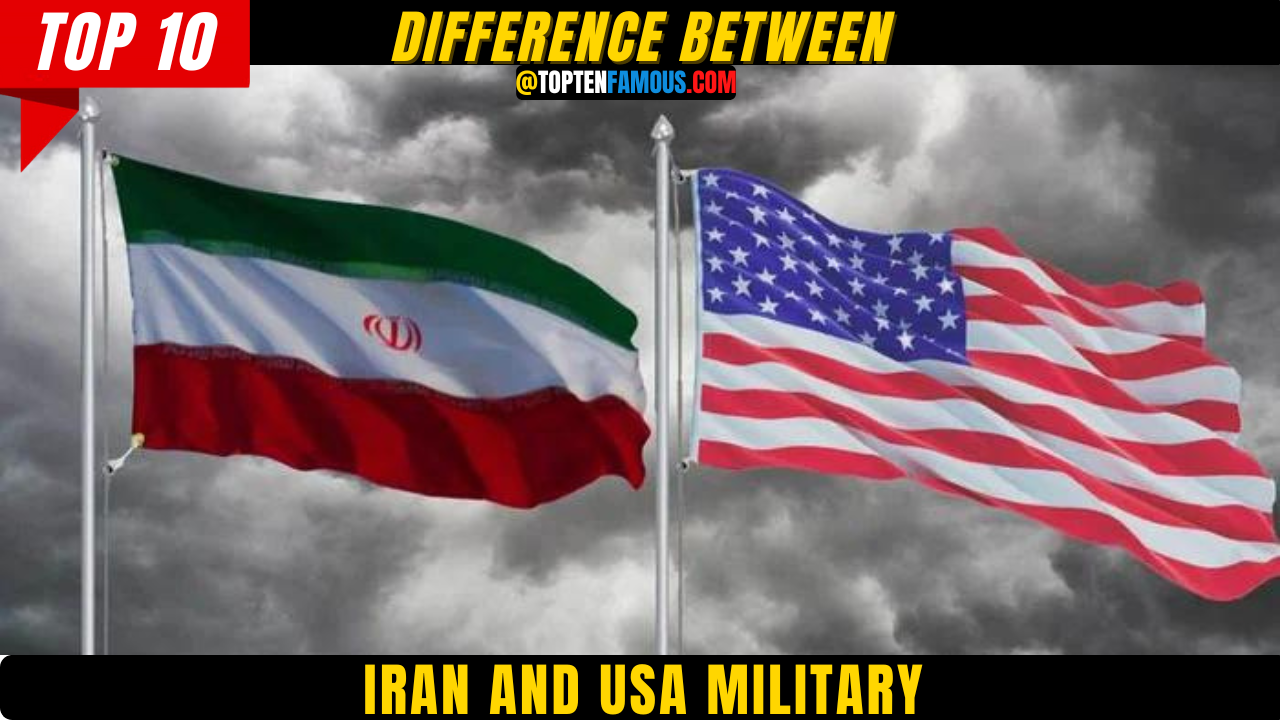Military
5 Differences Between IRAN and USA Military

America and Iran both are really powerful countries with a lot of military database.
So let’s have a look at 5 Differences Between IRAN and USA Military!
Rockets

Differences Between IRAN and USA Military-Rockets
Iran
Iran has one of the biggest rocket inventories in the Middle East and has gained total rocket frameworks and fostered a foundation to natively construct rockets. It has bought North Korean Scud-Bs, Scud-Cs, and Nodong long range rockets.
America
The United States has the capacity to create profoundly modern fluid and strong powered rockets, everything being equal. It as of now conveys 500 Minuteman and 10 MX/Peacekeeper atomic tipped intercontinental long range rockets (ICBMs) at three bases in Montana, North Dakota, and Wyoming.
Administration age and commitment

Differences Between IRAN and USA Military-Administration age and commitment
Iran
19 years old for obligatory military assistance; 16 years old for volunteers; 17 years old for Law Enforcement Forces; 15 years old for Basij Forces (Popular Mobilization Army); recruit military help commitment – year and a half; ladies excluded from military assistance.
America
18 years old (17 years old with parental assent) for male and female intentional assistance; greatest enrollment age 42 (Army), 27 (Air Force), 34 (Navy), 28 (Marines); administration commitment 8 years, including 2-5 years deployment ready (Army), 2 years dynamic (Navy), 4 years dynamic (Air Force, Marines)
Branches

Differences Between IRAN and USA Military-Branches
Iran
Military branches are Islamic Republic of Iran Regular Forces (Artesh): Ground Forces, Navy, Air Force of the Military of the Islamic Republic of Iran (Niru-ye Hava’i-ye Artesh-e Jomhuri-ye Eslami-ye Iran; incorporates air protection); Islamic Revolutionary Guard Corps (Sepah-e Pasdaran-e Enqelab-e Eslami, IRGC): Ground Forces, Navy, Air Force, Qods Force (unique activities), and Basij Force (Popular Mobilization Army); Law Enforcement Forces
America
US Army, US Navy (incorporates Marine Corps), US Air Force, US Coast Guard; note – Coast Guard directed in peacetime by the Department of Homeland Security, yet in wartime reports to the Department of the Navy.
Compound weapons

Differences Between IRAN and USA Military-Compound weapons
Iran
Iran experienced extreme misfortunes the utilization of Iraqi compound weapons over the period 1982 to 1988. As a result Iran has a lot of involvement of the impacts of synthetic fighting (CW). Iran has kept on keeping a huge protective CW capacity since the finish of the Gulf War in 1988. The main motivation for this work was most likely worry that Iraq kept on having synthetic weapons. Iran sanctioned the Chemical Weapons Convention (CWC) in November 1997 and has been a functioning member in crafted by the Organization for the Prohibition of Chemical Weapons (OPCW). Iran has openly recognized the presence of a synthetic weapons program created during the last option phases of the 1980-1988 conflict with Iraq.
America
The U.S. substance fighting (CW) program started with the foundation of the Chemical Warfare Service in June 1918. During World War I, the United States made, stored, and utilized substance weapons. Substance weapons advancement and creation went on during and after World War II, yet the development of unitary compound weapons was ended in 1969. During the Reagan organization, the development of parallel synthetic weapons was restarted, however was suspended in 1990. From that point forward, the United States no longer has a functioning CW program. The United States confirmed the Geneva Protocol in 1975, with the booking that the arrangement not matter to defoliants and uproar control specialists, for example, were utilized in Vietnam and Laos during the Vietnam War.
Atomic

Differences Between IRAN and USA Military-Atomic
Iran
By early June 2005, the EU-3 (France, Great Britain, and Germany) had not yet presented their proposition to Iran framing future atomic talks. The EU-3 mentioned a postpone in talks, yet Tehran dismissed the deferral and openly declared it would continue tranquil atomic exploration exercises. At issue was Iran’s insistance that right to serene atomic exploration be remembered for any proposition, a position the United States resolutely went against. Endeavors were made to convince Iran to surrender its fuel cycle desires and acknowledge atomic fuel from abroad, however Tehran clarified that any suggestion that didn’t ensure Iran’s admittance to serene atomic innovation would prompt the end of all atomic related exchanges with the EU-3.
America
As one of the five perceived atomic weapons states under the Nuclear Non-Proliferation Treaty (NPT), the United States keeps a sizeable stockpile of atomic weapons, including roughly 10,350 unblemished warheads, 5300 of which are viewed as dynamic or functional. Roughly 4,530 key warheads are functional, 1,150 of which are sent ashore based rocket frameworks (Minuteman and Peacekeeper ICBMs), 1,050 on aircraft (B-52 and B-2), and 2,016 on submarines (Ohio-class subs). 780 are strategic atomic weapons (TNWs), and comprise of an expected 200 Tomahawk land assault voyage rockets (TLAM/N), and 580 B61 bombs.
Must Read :10+ Surprising Facts About kazakhstan


